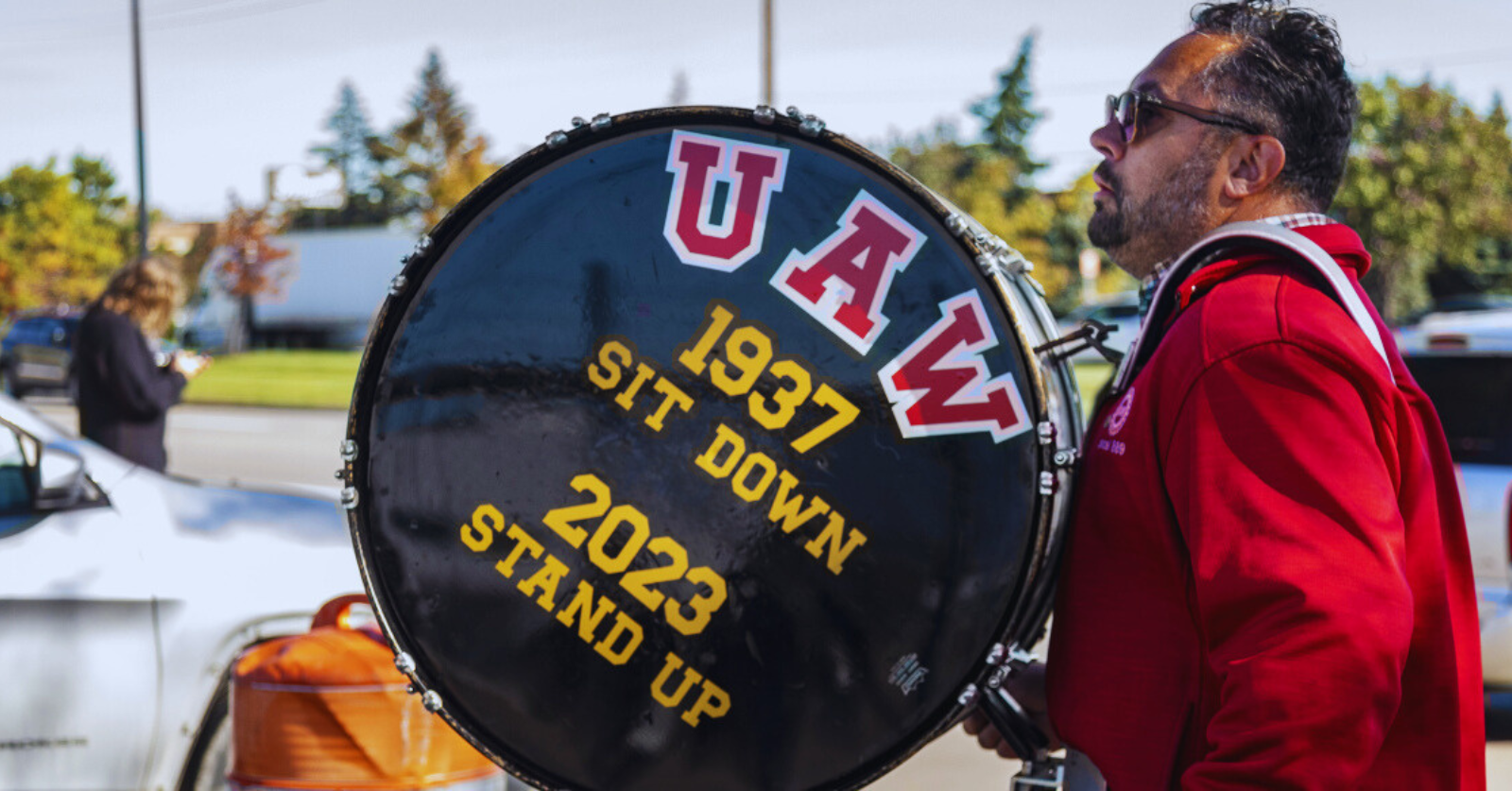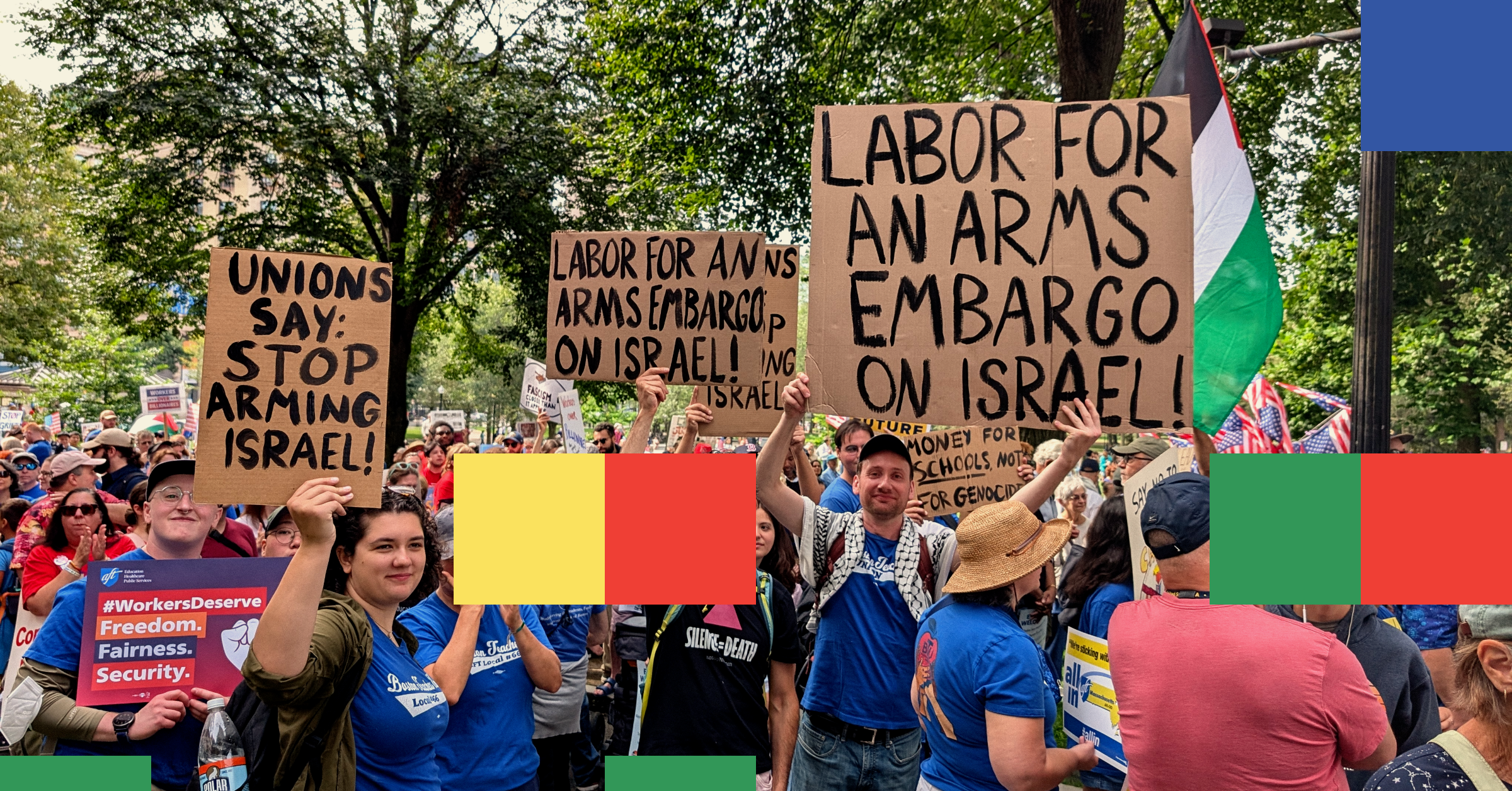When 4,500 shop stewards, union activists, local labor officials, and left-wing organizers gather in Chicago this coming weekend, April 19-21, it will be a major event. That’s because the energy in the US has moved to the labor movement and workplace organizing fights. The Labor Notes conference will bring activists and leaders from many of these struggles together for the first time in two years to learn and strategize.
Labor’s Moment in the US
In 2024, the two struggles at the front of all US socialists’ minds are the solidarity campaign with Palestine against Israel’s genocidal war and the rising labor movement. They should be connected. A much stronger labor movement — which has already been outspoken in the US in its calls for a ceasefire — would be able to help stop the US war machine and its support for Israel’s apartheid regime. And a strong labor movement in a globalized economy is unthinkable without international solidarity. The fight for Palestine and the fight for workers’ rights in the US are part of the same struggle.
On the workplace front, it’s an exciting year. Big contract fights for postal workers, teachers in big cities like Chicago and Philadelphia, film and TV workers, dock workers, and aerospace workers are all coming due, which means the US could be rocked by more big strikes that will build off the strikes of 2023. A major organizing drive is underway to organize non-union autoworkers at companies like Mercedes and Volkswagen. Thousands have already signed up to say they want the United Auto Workers (UAW), which is organizing the drive. The organizing is fueled by last year’s successful campaign to improve working conditions at the “Big Three” auto companies (Ford, General Motors, and Stellantis) and by the new militant reform leadership at the head of the UAW. (And we expect to find out whether the drive will secure its first big win at Volkswagen in Tennessee this coming weekend at the Labor Notes conference, which will be a very exciting moment.) Workers are organizing at Starbucks, Amazon, and elsewhere too. New organizing and the victory of new reform leaderships in national and local unions are combining in a really powerful way.
There is really no debate now that the main focus of the US left is on helping push forward this new labor surge. It’s a welcome return to class politics, after years of theorists and activists downplaying the importance of organizing alongside working-class people in the workplace. The postmodern left proclaimed the “death of class politics” but the last few decades showed that you can’t have socialist politics without worker leaders and workplace action, and workers themselves are showing that they’re ready to fight. Strikes, union drives, and marches on the boss are back on the agenda. There’s a long way to go before the US has a thriving and growing labor movement, but the signs are good so far. And it would be a game changer if it happened. The far right in the US has made big gains since the unions were beaten in the 1970s. Many working-class people dropped out of politics, and some joined the right. A fighting and dynamic labor movement could alter that — strengthening unions and also strengthening workers’ political power. A new generation of working-class people — majority women and with big sections of Black, brown, immigrant, and queer people — could fundamentally change US politics for the better.
Labor Notes, A Short History
Labor Notes was founded in 1979 by members of the International Socialists. The IS was a small but important force in the movement of young leftists who left campus activism to get jobs in the big industries of the time, including auto and trucking.
The 1970s rank-and-file labor rebellion, however, was cut short as the US and the global economies were dramatically reorganized. Big factories in the US closed up, unions took concessions and shrank. IS activists began to think more seriously about the long-term work that would be needed to win workers over to socialist politics — and how to reach out to others in other political traditions. That’s why they founded Labor Notes, which was to be a non-sectarian publication and network. It would be a cross-union publication that would bring together workers organizing in their workplaces to build strong and democratic unions that would fight the boss.
It wasn’t an easy time to do it. Leaders of the US labor movement, which was very bureaucratic and top down, were in an especially conservative and risk-averse mood as the big factories and workplaces it had long counted as its bases disappeared. Labor Notes was not afraid to champion bottom-up challenges against conservative labor leaderships. Many reform leaderships in the unions today have been in close touch with the Labor Notes network.
Through a mix of practical trainings on how to challenge bosses, organize around grievances, put together a contract campaign, organize a picket line, and navigate the US labor law system, Labor Notes armed a new generation of union activists with the tools it would need to survive and start fighting back. Its bigger publications and projects, including Jane Slaughter’s important 1983 book Concessions and How to Beat Them and the group’s sustained critique of 1980s management techniques known as “lean production” and “team concept,” were big contributions as well. And through its popular conferences held every other year, Labor Notes began to build a network of labor activists among what it called the “troublemaking wing” of the labor movement. These conferences, which used to draw hundreds, now regularly bring together thousands of activists.
The focus of the conferences is primarily on building skills and sharing lessons — resolutions and debates are avoided and discussions about politics outside of the unions and workplaces, for better or worse, are less central. This does reduce the risk of sectarian posturing and fighting, which is undoubtedly a reason for its success in building a big network. Most importantly, labor organizers can meet each other and build stronger relationships, and worker organizers newer to politics beyond the workplace get a chance to mix with left-wing activists. In recent years the conference has opened up to a range of left-wing ideas that runs from progressive politics to democratic socialism. As a reform wave has swept the US labor movement, more and more elected union leaders with a more militant and democratic perspective have also joined. In 2022, Bernie Sanders was a featured speaker, as were the presidents of the Chicago Teachers Union and the Teamsters. Groups like the Democratic Socialists of America and a few other socialist and anarchist organizations also hold side events. International labor activists with radical politics regularly attend.
This Year at Labor Notes
The 2024 gathering of Labor Notes will be the biggest conference yet — 4,500 in attendance (and 1,500 more turned away because the hotel is at capacity). Big panels and discussions will focus on: organizing workers at Amazon, the UAW’s drive to unionize the auto industry in the southern states, how to transform the healthcare industry, learning from the history of Black activists working in the labor movement, reports on the progress being made to make the UAW a fighting union, and lessons for how to build bigger and more effective strikes.
Major reform caucuses in the big unions, like the Teamsters for a Democratic Union and Unite All Workers for Democracy (the UAW reform group), will hold parties. Chicago’s progressive Democratic Party Mayor Brandon Johnson will give a welcoming address and UAW President Shawn Fain will close the conference out on Sunday afternoon. There will be more than 30 special meetings for workers in different industries — from airlines to building trades, ports and auto, healthcare and the public sector and logistics — and with specific focuses — from Palestine solidarity to Black and Latino worker organizing. International guests from Brazil, France, Japan, Mexico, Honduras, Nigeria, South Korea, China, and beyond will be at the conference to share lessons and build international solidarity.
Many of the socialists at the conference, including many members of DSA and my group, Bread & Roses, are supporters of what we call the rank-and-file strategy. For us, the conference is a key event because it helps strengthen the bottom-up forces in the labor movement. By bringing together thousands of shop stewards and labor activists from every big industry, Labor Notes moves us closer to having a real current within the labor movement of working-class leaders and organizers. They will hopefully be the core of any future socialist party in the US. It’s our job to meet and learn from them, and to figure out how to build socialist organizations that feel relevant, useful, and important to them.
Critically, the conference will also be a jumping off point for the next two years of labor and movement struggle. The threat of a second Donald Trump presidency, which could appoint far-right anti-worker officials to labor boards and courts and make it much harder to organize unions, will be on everyone’s mind. It’ll be up to the labor movement and left-wing organizations like DSA and others to help lead a real defense of workers rights and the rights of people of color, immigrants, women, queer people, and more. It’ll be up to these groups to pivot from defense to offense as well, as we try to rebuild the power of movements and the socialist project in hostile terrain. Many of the key organizers and leading forces in these fights to come will be in Chicago this weekend.




